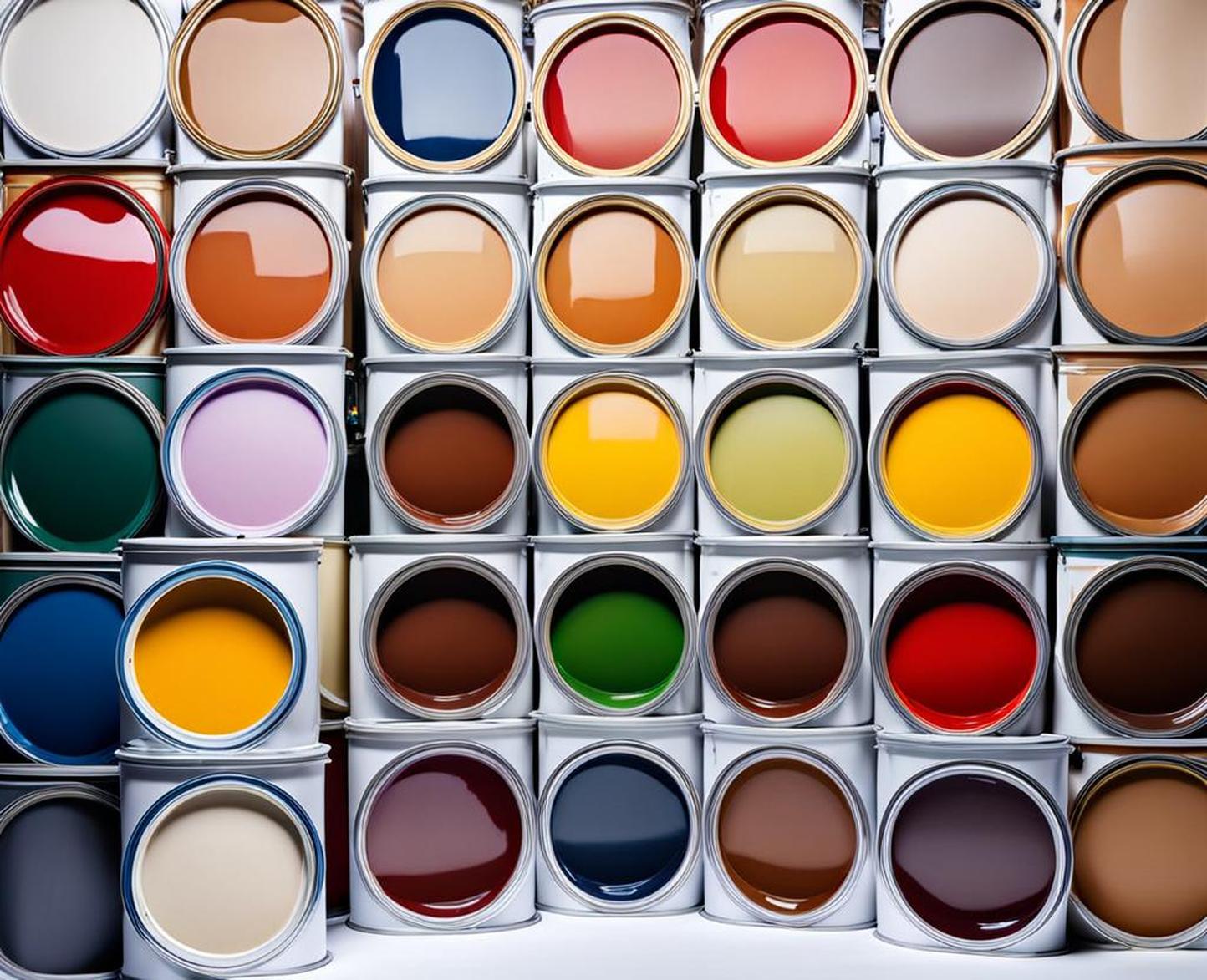Preparing to paint the interior of your home? Unsure how much paint you’ll need to get the job done right? We’ve all been there. Figuring out paint quantities can be confusing, especially when the coverage information is vague. But there’s good news – it doesn’t have to be complicated! Keep reading to discover the simple formula for determining how much area 5 gallons of paint will cover. With this knowledge, you’ll buy the perfect amount of paint for your project the first time – no frustrating return trips needed.
How Much Square Footage Does 5 Gallons of Paint Cover?
When estimating paint coverage, it’s essential to consider the type of paint you are using. Spread rates can vary significantly depending on whether you are painting walls, ceilings, trim, or using primer.
For wall paint, you can expect 5 gallons to cover approximately 1500-2000 square feet , assuming two coats. Most quality interior wall paints cover 350-400 square feet per gallon for the first coat, and an additional 350-400 square feet for the second coat.
Ceiling paint often has better coverage rates because ceilings don’t require as thick of a coat. With ceiling paint, 5 gallons will typically cover 1750-2000 square feet with two coats. You can expect about 325-375 square feet per gallon per coat.
For trim and accent walls, the coverage is slightly less than standard wall paint. 5 gallons of trim paint will usually cover 1500-1750 square feet , assuming two coats are applied. Trim paint covers approximately 375-425 square feet per gallon.

Primers generally have the lowest spread rates of all. You can expect 5 gallons of high quality primer to cover around 1125-1375 square feet if applying two complete coats. Primer covers approximately 225-275 square feet per gallon.
Factors That Determine Paint Coverage
Why do the spread rates vary so much? There are several factors that influence how far paint will go:
- Type of paint – primers, walls, ceilings and trims all require different thicknesses.
- Porosity of the surface – fresh drywall absorbs more paint than previously painted walls.
- Color and opacity – deeper colors may require an extra coat for even coverage.
- Application method – spraying is more efficient than brushing or rolling by hand.
- Number of coats – two coats are usually recommended for best durability.
Calculate How Much Paint You Need
Now that you know approximate per gallon coverages, determining how much paint to buy is straightforward:
- Measure room dimensions to calculate total square footage of walls, ceilings, and trim.
- Research spread rates for your specific paint types and surfaces.
- Divide total square footage by spread rate to determine gallons required per coat.
- Multiply gallons needed by the number of coats to be applied (typically 2).
This will tell you the total gallons of each type of paint you’ll need to buy to complete the job. Don’t forget that primer is applied first before painting walls and trim!
Allow for Extra Paint
When purchasing paint for a major project, it’s always smart to buy slightly more than your exact calculations. We recommend purchasing an extra 10-15% more paint than the totals above to ensure you don’t run out partway through the job. It’s far better to have extra paint leftover than make multiple trips to the store when you find you’re a few gallons short.
5 Gallon Paint Coverages for Common Projects
To give you a better idea, here are some example paint needs for typical painting jobs:
- An 800 sq ft room (two-car garage size) – You’ll need approximately 2 gallons of wall paint and 2 gallons of ceiling paint (4 coats total).
- A 1200 sq ft house interior – Plan on buying 5-7 gallons of wall paint and 3-4 gallons of ceiling paint for two coats throughout.
- Exterior house siding – Coverages vary drastically based on siding type and building height. Expect to need 10+ gallons for a two-story home.
Techniques to Maximize Paint Coverage
Besides buying quality paint designed for maximum spread rates, there are several best practices you can use to get the most out of each gallon of paint:
- Properly prepare surfaces – Clean walls thoroughly, fill holes and cracks, sand glossy areas, spot prime patched areas.
- Use high quality applicator tools – Invest in a high-end brush, roller, and roller cover.
- Maintain proper wet thickness as you paint – Don’t overspread the paint or apply too thin of a coat.
- Allow proper drying time between coats – Follow manufacturer’s recommendations before recoating.
Taking the time to prep surfaces and use proper painting technique will help the paint go farther with fewer coats required.
When starting an interior painting project, taking the time to accurately calculate how much paint you need can save you major frustration down the road. Now you know that for most interior paints, 5 gallons will cover approximately 1500-2000 square feet with two coats. Primers have lower spread rates of around 1125-1375 square feet for 5 gallons. Use the techniques above to measure your room dimensions, research spread rates, and buy 10-15% extra paint to be safe.
You can use this formula to determine 5 gallon paint coverage the first time. No more expensive return trips for more paint! We hope these tips make planning your next painting project smooth sailing. Let us know if you have any other interior painting questions!
